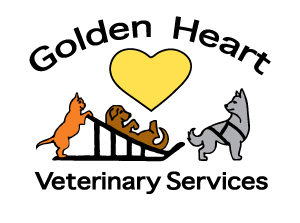Illustrated Articles
-
Lipomas are fatty tumors that affect a variety of pet birds. These are typically benign fatty growths found under the skin. It is classically considered to have both a nutritional and genetic factor for development.
-
Xanthomas are discrete masses or diffuse, thickened areas of skin that are yellow-orange and dimpled in appearance. They are accumulations of fat and cholesterol and are most commonly found in cockatiels and budgies (and they are more often found in females).
-
Tylosin is an antibiotic given by mouth or by injection in small mammals and is used off label to treat diarrhea and inflammatory bowel disease. Common side effects include decreased appetite and diarrhea. Do not use in pets that are allergic to it. If a negative reaction occurs, call your veterinary office.
-
Damage to the tympanic membrane and middle ear infections can be very painful for cats and cause a variety of clinical signs affecting the skin and nervous system. Diagnosis often requires a thorough ear examination with testing while your cat is under sedation or anesthesia. The treatment methods and prognosis depend on the nature of your cat's condition.
-
Damage to the tympanic membrane and middle ear infections can be very painful for dogs and cause a variety of clinical signs affecting the skin and nervous system. Diagnosis often requires a thorough ear examination with testing while your dog is under sedation or anesthesia. The treatment methods and prognosis depend on the nature of your dog's condition.
-
Ultra-micronized palmitoylethanolamide (PEA-um), brand name Redonyl Ultra, is a nutraceutical used to support skin health in dogs and cats. PEA-um comes in oral chewable and powder forms. It is used "off label" or "extra label".
-
Ultrasound uses the reflection of sound waves to generate an image of internal structures, allowing for identification of masses, pregnancy diagnosis, abnormal heart function and muscle size, abnormalities of the orbit, and abnormal appearance of abdominal organs. Ultrasound results can be analyzed in real time; however, assessment by a radiologist may take several days. Ultrasound is an invaluable tool to detect problems in a non-invasive fashion.
-
Ultrasound uses the reflection of sound waves to generate an image of internal structures allowing for identification of masses, pregnancy diagnosis, abnormal heart function and muscle size, abnormalities of the orbit, and abnormal appearance of abdominal organs. Ultrasound results can be analyzed in real time; however, assessment by a radiologist may take several days. Ultrasound is an invaluable tool to detect problems in a non-invasive fashion.
-
An umbilical hernia is a protrusion of the abdominal lining, abdominal fat, or a portion of abdominal organ(s) through the area around the umbilicus. An umbilical hernia can vary in size from less than a ¼” (1cm) to more than 1” (2.5cm) in diameter. Small (less than ¼” or 1cm) hernias may close spontaneously (without treatment) by age 3 to 4 months. If the hernia has not closed by the time of spaying or neutering, surgical repair of the hernia is recommended and prognosis is excellent.
-
An umbilical hernia is a protrusion of the abdominal lining, abdominal fat, or a portion of abdominal organ(s) through the area around the umbilicus. An umbilical hernia can vary in size from less than a ¼” (1cm) to more than 1” (2.5cm) in diameter. Small (less than ¼” or 1cm) hernias may close spontaneously (without treatment) by age 3 to 4 months. If the hernia has not closed by the time of spaying or neutering, surgical repair of the hernia is recommended and prognosis is excellent.
